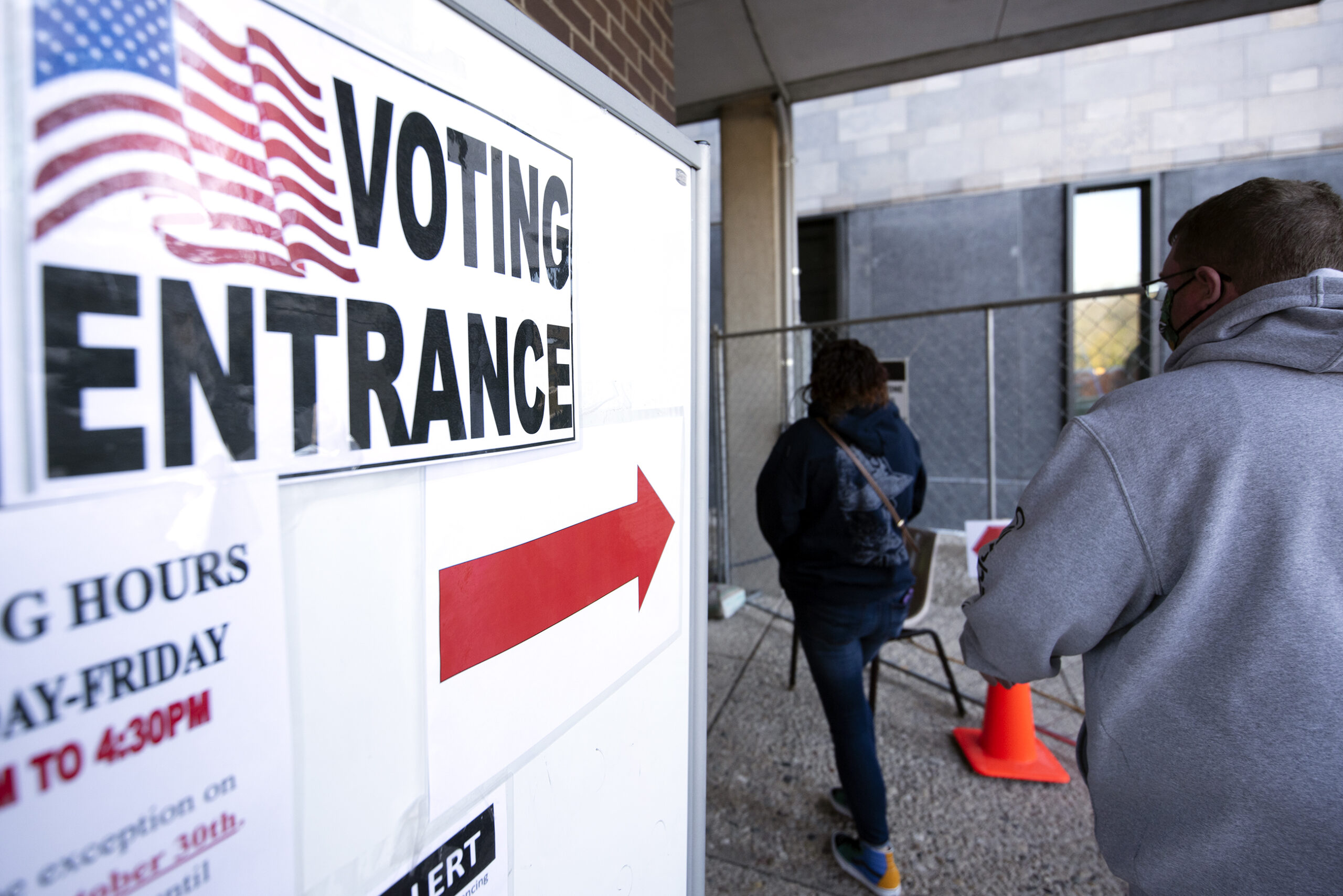There is a chance that everything will run smoothly and without issue on Election Day. But in this tense, highly charged political moment, that’s not a given.
If it doesn’t, Susan Driscoll hopes that voters will be prepared. Driscoll is president of Milwaukee’s Crisis Prevention Institute and has recommendations for preparing to vote in person. The institute, which has been providing de-escalation training for about 40 years, recently released a list of techniques to help voters and others avoid tense situations during Tuesday’s election.
“We teach that while you can’t control somebody’s behavior, you can absolutely control your own behavior, and that’s the best way to get a good outcome,” she said.
News with a little more humanity
WPR’s “Wisconsin Today” newsletter keeps you connected to the state you love without feeling overwhelmed. No paywall. No agenda. No corporate filter.
Driscoll admitted most people are probably feeling anxious heading to the polls, especially in a year that’s been dominated by one controversy or crisis after another.
But anxiety can portend escalating tensions, Driscoll said. And by noticing that anxiety, you can position yourself to react with a thinking brain as opposed to an emotional brain that may inflame the situation.
Step 1: Avoid Judgement
If you come across someone who’s feeling emotional or anxious, respond with empathy and support, said Driscoll, who explained that behavior is a form of communication.
“Somebody who is acting out or has a strong opinion is just trying to communicate something,” she said. “Usually it’s distress or an attempt to control or protect whatever they have left.”
Treat these people without judgement, and try to avoid conversations that center on whether you agree or disagree with their comments.
“Look at them as a person, simply a person in distress, and respond as you would anybody you knew and cared about who is in distress,” she said.
Step 2: Don’t Take It Personally
Driscoll says it’s important to remember that the distress someone might be aiming at you isn’t because of you. It’s because of another situation from another part of their lives or an event that happened before they came into contact with you.
“It’s absolutely not about you,” she said. “You just happen to be the person that is there when they’re showing up with this distressed behavior.”
In that circumstance, she said, try to detach yourself emotionally. It can help to consider yourself a third-party witness to whatever behavior they’re displaying. She said remembering that their actions are their way of protecting what they have can help you to activate the rational part of your brain.
Step 3: Control Your Reaction
Be calm and be consistent in your response, Driscoll said.
Getting into a debate with someone or arguing to win will not resolve the situation.
“You acknowledge that they are people with real feelings — that’s how you avoid these escalations,” she said.
Although it might be difficult to tell if someone is feeling defensive with faces covered by masks, pay attention to other signs such as clenched fists, hunched shoulders or pacing. Then, try to control your own response by pausing and taking a deep breath.
“You’re disengaging that emotional brain and helping your rational brain … take charge because it takes longer to engage the thinking brain than it does the emotional brain,” she said.
Step 4: Be Prepared
You may find yourself in a position where you have to respond. A person on the defensive might try to ask you a challenging question, refuse to do something or try to intimidate you.
You can prepare yourself for that by interrupting and redirecting.
“You acknowledge their feeling and then you stick to your point,” Driscoll said.
For example, Driscoll said if someone tells you the election is a hoax and a set-up, respond by saying that you understand their perspective and that people have lots of different opinions. Then redirect the conversation by saying something like, “I can’t wait for this election to be over.”
“Don’t engage in the debate,” she said. “Acknowledge their feelings and try to change the subject to something more neutral.”
Wisconsin Public Radio, © Copyright 2026, Board of Regents of the University of Wisconsin System and Wisconsin Educational Communications Board.



